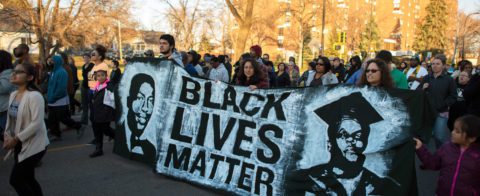The purpose of the Race Forward Race Reporting Guide is to serve as an accessible tool for leaders and businesses in the Detroit Region talking about race, racism, and racial justice. It also aims to provide context and guidelines to inform reporting and language, and to encourage more conversation and understanding. Read the full Race Forward Race Reporting Guide.
Key Terms
Anti-racism
The work of actively opposing racism by advocating for changes in political, economic, and social life. Anti-racism tends to be an individualized approach, and set up in opposition to individual racist behaviors and impacts.
Classism
Classism is the systematic oppression of subordinated class groups, held in place by attitudes that rank people according to economic status, family lineage, job status, level of education, and other divisions. One’s race can be a major determinant of one’s social or economic class. The variables of race and class, though closely connected, each need distinct attention.
Colorism
Discrimination based on skin color, which often privileges lighter-skinned people within a racial group, positioning people with darker complexions at the bottom of the racial hierarchy. It is an example of how white supremacy can operate among the members of a single racial and/or ethnic group. This form of prejudice often results in reduced opportunities for those who are discriminated against, and numerous studies have revealed differences in life outcomes by complexion.
Diversity
There are many kinds of diversity, based on race, gender, sexual orientation, class, age, country of origin, education, religion, geography, physical, or cognitive abilities. Valuing diversity means recognizing differences between people, acknowledging that these differences are a valued asset, and striving for diverse representation as a critical step towards equity. See “Equity.”
Equity
Equity means fairness and justice and focuses on outcomes that are most appropriate for a given group, recognizing different challenges, needs, and histories. It is distinct from diversity, which can simply mean variety (the presence of individuals with various identities). It is also not equality, or “same treatment,” which doesn’t take differing needs or disparate outcomes into account. Systemic equity involves a robust system and dynamic process consciously designed to create, support, and sustain social justice. See “Racial Justice.”
Implicit Bias/Unconscious Bias
Attitudes that unconsciously affect one’s decisions and actions. People often think of bias as intentional, i.e., someone wanted to say something racist. However, brain science has shown that people are often unaware of their bias, and the concept of implicit bias helps describe a lot of contemporary racist acts that may not be overt or intentional. Implicit bias is just as harmful, so it is important to talk about race explicitly and to take steps to address it. Institutions are composed of individuals whose biases are replicated, and then produce systemic inequities. It is possible to interrupt implicit bias by adding steps to decision-making processes that thoughtfully consider and address racial impacts.
Inclusion
Being included within a group or structure. More than simply diversity and quantitative representation, inclusion involves authentic and empowered participation, with a true sense of belonging and full access to opportunities.
Minority/Minorities
A term that has historically referred to non-white racial groups, indicating that they were numerically smaller than the dominant white majority. Defining people of color as “minorities” is not recommended because of changing demographics and the ways in which it reinforces ideas of inferiority and marginalization of a group of people. Defining people by how they self-identify is often preferable and more respectful. The term “minority” may be needed in specific cases (such as “minority contracting” and “minority-owned businesses”) to reflect data that is collected using those categories.
People of Color
Often the preferred collective term for referring to non-white racial groups, rather than “minorities.” Racial justice advocates have been using the term “people of color” (not to be confused with the pejorative “colored people”) since the late 1970s as an inclusive and unifying frame across different racial groups that are not white, to address racial inequities. While “people of color” can be a politically useful term, and describes people with their own attributes (as opposed to what they are not, eg: “non-white”), it is also important whenever possible to identify people through their own racial/ethnic group, as each has its own distinct experience and meaning and may be more appropriate.
Racial Justice
The systematic fair treatment of people of all races, resulting in equitable opportunities and outcomes for all. Racial justice—or racial equity—goes beyond “anti-racism.” It is not just the absence of discrimination and inequities, but also the presence of deliberate systems and supports to achieve and sustain racial equity through proactive and preventative measures.
Systemic Analysis
A systemic analysis means we are examining the root causes and the mechanisms at play that result in patterns. It involves looking beyond individual speech, acts, and practices to the larger structures — organizations, institutions, traditions, and systems of knowledge.
Additional Resources:

Learn how the Chamber is committed to economic equity and inclusion.















